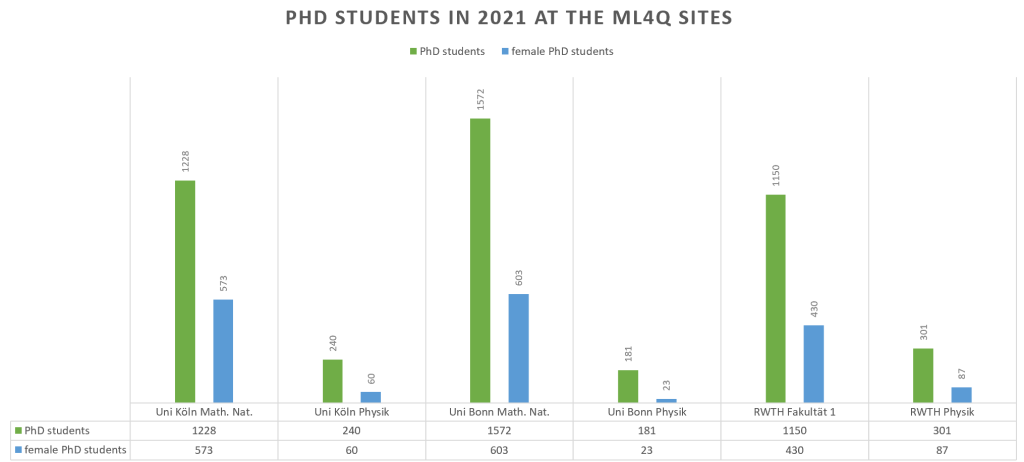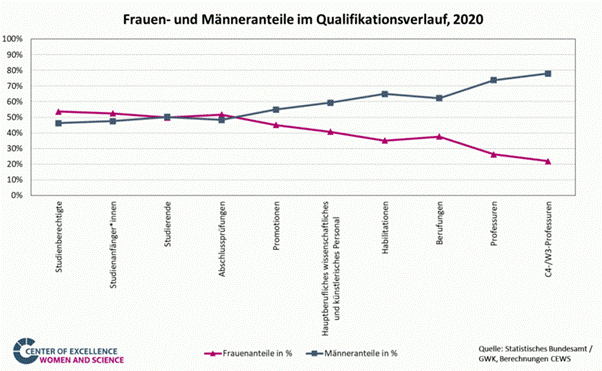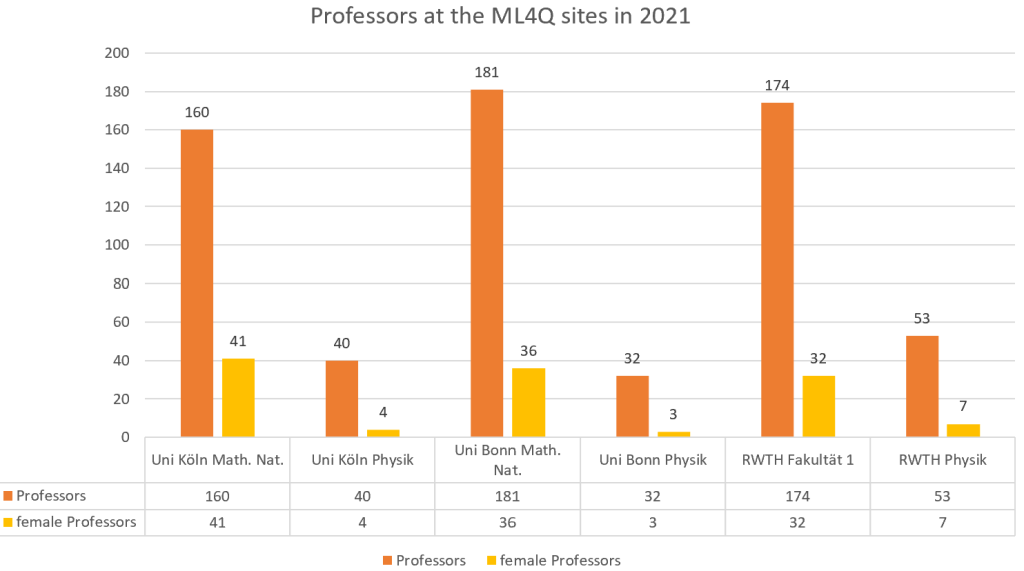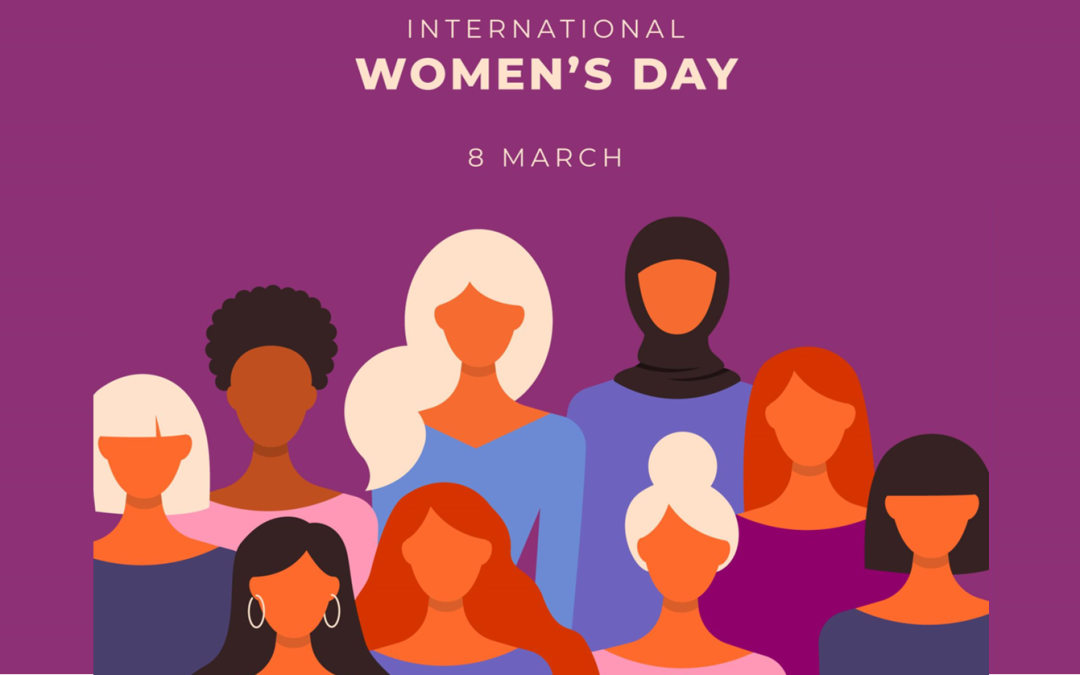Image by Freepik – The picture shows illustrated women without filled out faces with different skin colours, hairstyles and a hijab.
International Women’s Day 2023 – #EmbraceEquity
Whether it is the Covid 19 pandemic, which has had a significant impact on the living and working conditions of women in particular, governments and leaders who are increasingly restricting the fundamental rights of girls and women, or the gender pay gap: despite all the progress made since the first International Women’s Day in 1911, we still live in a world dominated by patriarchal structures, where gender can play a significant role in influencing the course of one’s life and the challenges one faces. Especially as a woman in STEM, one is aware every day anew of the structural inequalities that a career in science carries with it. Let’s use the day to reflect on what we have already achieved – in general and STEM-related – but also to be aware of what steps still need to be taken to create an equal, diverse and inclusive world where neither gender nor other diversity dimensions have any influence.
A quick journey through time – 112 Years of International Women’s Day
International Women’s Day has its origin in the female workers’ movement in the 19th and 20th centuries. Due to massive structural changes as industrialisation progressed, female workers joined together in associations to fight for equal rights (the right to vote), higher salaries and better working conditions. On 20th February 1909, a national women’s day was celebrated in the USA and at the Second International Socialist Women’s Conference in Copenhagen on 27th August 1910, the German socialist Clara Zetkin suggested introducing an international women’s day. On 19th March, the first International Women’s Day was held in Denmark, Germany, Austria, Switzerland and the USA. The following year, International Women’s Day was also celebrated in France, Sweden and the Netherlands, and in 1913 in Russia. The date of 8th March was not set until 1921; it may have been chosen in honour of the strike of poor women in Petrograd on 8th March 1917, whose action helped to start the February Revolution. After women in Germany obtained the right to vote in 1918, important issues were legal abortions, protection for pregnant women and mothers, equal pay for equal work, lower food prices and school meals. In fascist Germany under the Nazi regime, all associations and press organs were brought into line in 1933 and International Women’s Day could no longer be held. Instead, the regime introduced Mother’s Day as an official holiday in order to celebrate the role of women in the National Socialist worldview on the surface, but ultimately to point out that women should give birth to children and be blameless wives for the sake of the German nation. In private and in secret, meetings nevertheless continued to take place on 8th March. In the divided post-war Germany, the day was celebrated differently: while it was reintroduced in the Soviet occupation zone already in 1946 and had the character of an official socialist holiday in the GDR, the situation in the FRG was a less official one; it was not until the 1960s that the autonomous women’s movement raised awareness of International Women’s Day again. In 1975, the International Year of Women, the United Nations organised a celebration on 8th March for the first time. In 1977, the UN General Assembly passed a resolution asking all states to declare a day as “United Nations Day for Women’s Rights and World Peace”. Since then, there have been annual UN events on the 8th of March.
The motto of this year’s International Women’s Day is #EmbraceEquity.
Not so fun facts – how it can feel to be a woman in our patriarchal society
We all certainly remember the emotionally loaded presidential campaign in the US in 2016. Hillary Clinton faced allegations of corruption, her closeness to Wall Street, deleted emails and…she was perceived as too ambitious. Too ambitious for the highest position in the country, that seems at least somewhat paradoxical. Especially since even a businessman and TV celebrity who has failed several times could be said to be very ambitious in his attempts to become president. Hillary Clinton’s seemingly inappropriate ambition has been much blamed on her and has been a repeated topic of discussion among her competitors and detractors; this cannot be seen in isolation from her gender. By running for president, she has entered a field that is largely associated with men in people’s minds. Powerful women are perceived as violating the norm: power and success are seen as being typically masculine. Women with responsibility and assertiveness are perceived as bossy; to be considered competent, they have to give up being seen as warm. Successful women are often assumed to be cold and less liked, and these are not the only challenges they face. Sticking with female politicians, during the primary campaign Hillary Clinton received almost twice as many abusive Twitter messages as Bernie Sanders. The word most often associated with her was “bitch”. When New Zealand’s then Prime Minister Jacinda Ardern became pregnant while in office, she faced ongoing sexism during an interview on Australian TV: for example, the host made highly inappropriate comments about her physical appearance and asked about the conception date of the unborn child. These two incidents are not isolated examples and illustrate what the everyday life of women in patriarchy can look like.
Did you know…
… that the crash test on cars, which is supposed to contribute to a driving experience that is as safe as possible, is carried out on dummies modelled on the standard male body and thus used as a representative of the adult population in general? And the “female dummies” that sometimes exist are simply smaller variants of the male ones and do not take into account the female physiognomy in any way; to make it worse, they are only tested in the co-driver’s seat.
Women in STEM – Facts, Figures & Data
It is not a new realisation: women continue to be underrepresented in STEM. Gender stereotypes that have been preserved continue to contribute to the fact that at a young age girls may already have the opinion that they have no talent for STEM subjects or that they do not experience any active encouragement of their interests. Programmes such as Girl’s Day provide an impulse and help to raise awareness of STEM professions among girls and to introduce them to professions that are not “typical for girls” at a low level. Since 2012, there has been an increased focus on gender equality and gender mainstreaming in research within the European Research Area and Diversity & Inclusion has now also found its way into third-party funding applications. Nevertheless, we know from our own experience that men (yet) dominate the scene in the natural sciences – be it when looking through the rows of the lecture hall along the fellow students or when looking at the front of the classroom. Other factors such as unequal treatment of men and women during the doctoral phase in different fields of study, gender-specific differences in the working conditions of researchers and gender-specific inequalities in career development and decision-making contribute to a decision against studying STEM or staying in academia. In 2018, only 29.4% of all physics students in Germany were female. Fortunately, the number is continuously increasing (in 2000, for example, it was 17.1%), but we are still far from gender parity. If we focus on the category of gender across all disciplines, we see that in 2018 48.9% of all students were female. The situation is similar for PhDs across disciplines: 45.2% of all completed PhDs in 2018 were by women. In the Department of Physics/Astronomy, however, only 20.1% of PhDs were completed by women in the same year.
In terms of PhD students at our ML4Q sites, the following situation can be seen for the year 2021:

The chart shows how many PhD students were in the Mathematics and Natural Sciences Faculty and in the Physics Department at the universities of Cologne, Bonn and Aachen in 2021: total number (green) and number of female PhD students (blue). It should be noted that the individual faculties may combine different disciplines and thus cannot be compared 1:1. The figures are intended to show the tendency and also not to make a value judgement with regard to the commitment to getting women interested in the natural sciences. The Forschungszentrum Jülich is not listed in this chart, as the PhD students working there may also be included in the statistics of the individual universities. The proportion of female PhD students at the FZJ was 34% in 2021. In ML4Q itself, 15% of PhD students were female in January 2022.
The gender bias also continues in the further course of a career, not only in STEM. If it is publications, third-party funding or being promoted to a higher position: women are confronted with structural barriers and inequalities in all areas of science. These factors contribute to the so-called leaky pipeline: This term is used to describe the declining percentage of women with the various qualification levels and career stages.

The chart shows the percentages of women and men over the course of an academic career. Women’s rates are shown in pink, men’s in blue. It is shown that up to and including the final examinations, there is a balanced ratio of female and male students. Starting with the PhD, the gap widens and the difference is greatest at the career level of W3 professorships. The data are for 2020.
In 2021, only every fourth full-time professorship in Germany was held by a woman (27%). Looking at the STEM field, the percentage of women drops to 21.5%. The following is valid for our ML4Q sites in 2021:

The chart shows how many professors were in the Mathematics and Natural Sciences Faculty and in the Physics Department at the universities of Cologne, Bonn and Aachen in 2021: total number (orange) and number of female professors (yellow). Professors employed at the FZJ may be included in the statistics of the respective university. In the scientific area, 16% of the leading employees are female.
Gender mainstreaming measures, gender equality plans and dedicated support in STEM should help to keep more women in academia.
* Both charts were updated in February 2024 due to Excel errors. If you have any further related questions, please contact Eva Kanis.
EDI @ ML4Q
ML4Q offers various support in the area of Equity, Diversity & Inclusion (EDI). With childcare support, a separate parent-child room, assistance for parental leave or care for dependents, our researchers have the possibility to focus on their academic goals in the best possible way regardless of their family responsibilities. Diversity Stewards at each site act as the first low-threshold contact point in the event of any discrimination on site and connect with the ML4Q Office. Since 15th February 2023, a new Equal Opportunities & Diversity Manager, Dr. Eva Kanis, has been responsible for the cluster. Enquiries or suggestions of any kind can be sent to ml4q-edi@uni-koeln.de at any time. Over the next few months, further measures will be developed and implemented, which will then be presented in a specific section on the website.
Recommendations
Sources
Facts about the history of International Women’s Day have been taken:
- https://frauen.verdi.de/aktionstage/frauentag/++co++94bbca54-e3fa-11e2-88d2-52540059119e
- https://www.dgb.de/schwerpunkt/internationaler-frauentag-weltfrauentag#geschichte
The figures for the individual universities were kindly provided by the respective PhD offices, HR departments, responsible persons and published reports. The figures not specific to ML4Q sites are taken from the MINT data tool, the She Figures Report 2021 and the Federal Statistical Office. Below not so fun facts and did you know are data from Invisible Women by Caroline Criado Perez. For further questions, please contact ml4q-edi@uni-koeln.de at any time.

About Eva
Though originally specialised in Classical Archaeology and History, Eva has increasingly turned to the topics of Equity, Diversity & Inclusion during her PhD and, among other things, worked as a PhD representative of the Faculty of Humanities for two years and tried to bring these topics more into focus. After a stop as deputy project manager in the project “Development and Implementation of a Diversity & Inclusion Strategy for Forschungszentrum Jülich”, she has taken over the role of Equal Opportunities & Diversity Manager in ML4Q since 15th February 2023.
